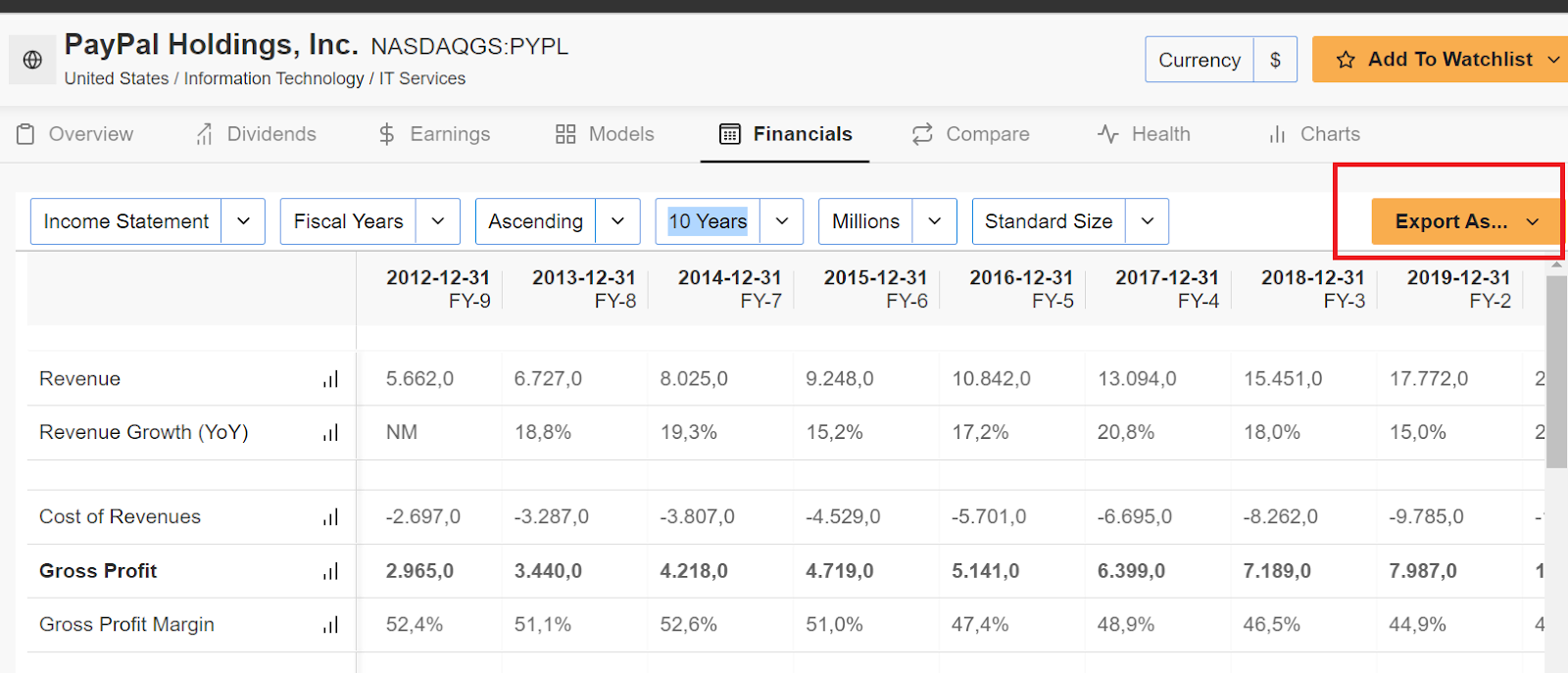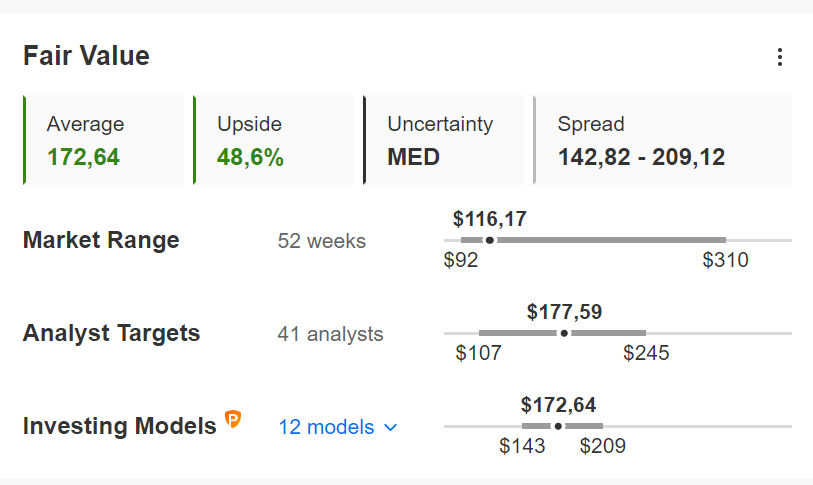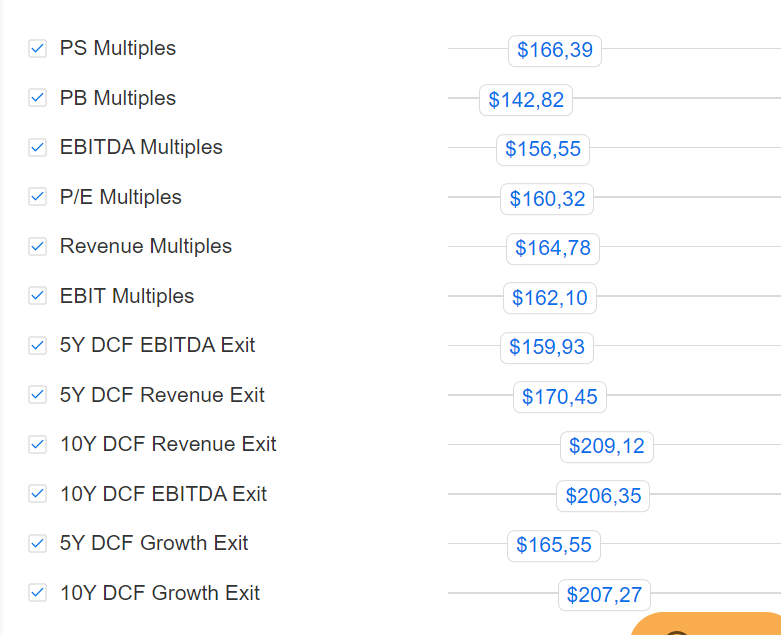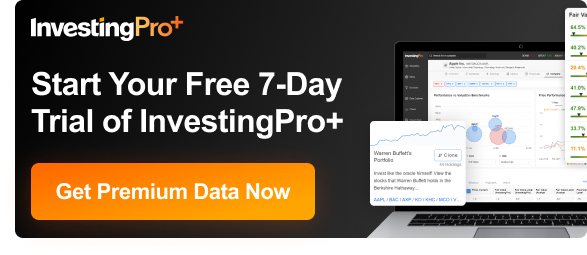Investing.com’s stocks of the week
-
Uncertainty in the current market makes it all the more important to dig into a stock’s true value
-
PayPal is an example of a high-flyer that has taken a big drop
-
So, is there value? Let’s have a look at PayPal’s value using a variety of tools.
-
If you’re interested in upgrading your search for new ideas, check out InvestingPro+
The investor’s great dilemma, when s/he enters the markets, is to know if and how much s/he can earn from her/his investments.
We, therefore, start with 2 main assumptions, namely:
- Everyone invests in the stock market for the purpose of growing their money
- The market is not predictable, so we must always live with uncertainty
Knowing all this, we need tools, data, and information, which can allow us, in relation to the two points above, to "maximize" our results, namely:
- Increase the probability of earning money
- Minimize the impact of "unpredictable" events in our portfolios
That's why when we invest in stocks, we need to consider as much information as possible, be able to compare them to each other and have tools to help us minimize the margins of error.
Today, let's see how to use Investing.com's tools to analyze a stock. I'll do it using PayPal Holdings, Inc. (NASDAQ:PYPL) stock as an example.
Checking the Charts
The first level of analysis is the market context: that is to understand at the level of markets, indices, and sector, if the context is favorable or not to the stock.
To check the current situation, I can use the initial charts on Investing.com for the Nasdaq.
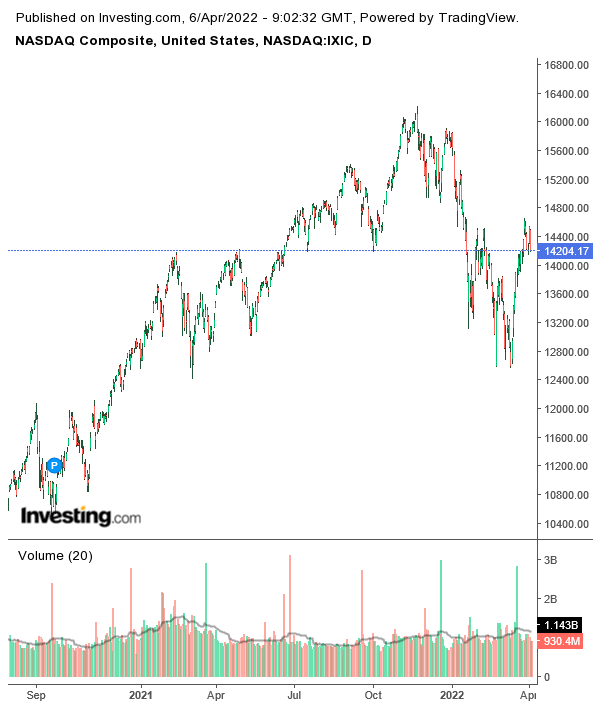
From the chart above, we can see how the Nasdaq index (which includes PayPal), after a correction of just over 20%, is now trying to climb back to the all-time highs, in a bullish market context that has been going on for several years and has not yet reversed. In fact, the support at 12,600 points seems to have held well for now. This holds up even if I extend the time horizon and change the time frame from daily to weekly, for example, to see the underlying trend.
Having checked the market context, I can dive into PayPal’s details. Starting with the chart:
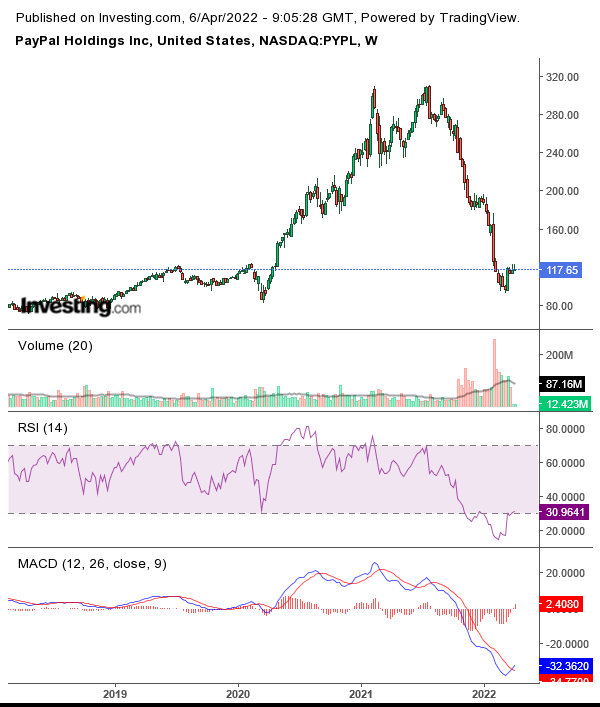
One of the first things you notice here is the conspicuous decline from all-time highs of the second half of 2021. A decline that initially started from a general correction in the tech sector, as per the Nasdaq trend seen above, but then accentuated in PayPal's case by a below-expected quarterly result.
And yet, we can set some indicators (such as RSI in oversold and MACD in bullish cross) that tell us on a graphical level that "maybe" the worst is over.
Looking at PayPal’s Financial Health
Let’s go back to that quarterly earnings record, where we have some very interesting functions for free.
In fact, if we focus on PayPal’s earnings, we notice (image below) two important things:
- The most recent earnings were indeed below consensus, but still positive and growing continuously as a medium-term trend
- Revenue growth remains positive and better than analysts' estimates
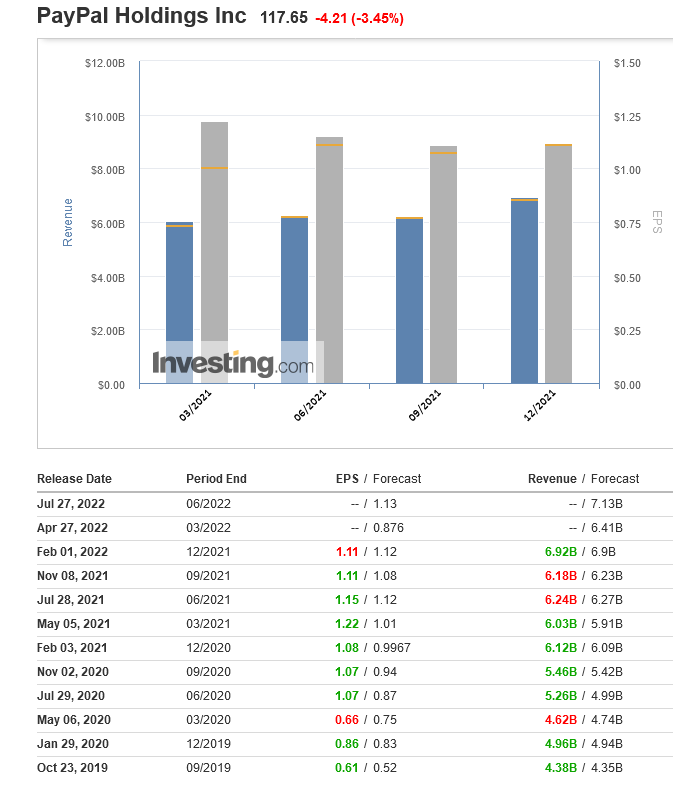
So, with just the considerations seen above, I could already argue that such a drop in PayPal’s stock price is beyond unjustified.
But I need to go further, and I can do so using InvestingPro tools.
Pro opens up access to a whole host of additional features, including the "financial health" of any given stock. So, here’s PayPal’s snapshot:
Specifically, in the image above, we see, starting from the box on the left, the overall status score (from 1 to 5).
The value for PayPal ranks at 3/5, so a "Good" financial health. Immediately below, we then see the detail of each of the main items (Cash Flow, Growth, Price, Profits, Valuations). Each in turn can be delved into with dozens of indicators present.
In addition, we note that from the state of health, the two "lowest" items are the cash flow and the relative value, while profit health looks very solid. Remember earnings and a profit miss had been the REAL REASON of the sharp extended decline in the shares. This offers another confirmation that investors may have overreacted.
On the other hand, if we look at the right panel, we can also see on a graphical level, the trend over time of these financial health indicators, in order to understand if the current levels show worrying declines (in this case no) or a growing trend (such as valuations).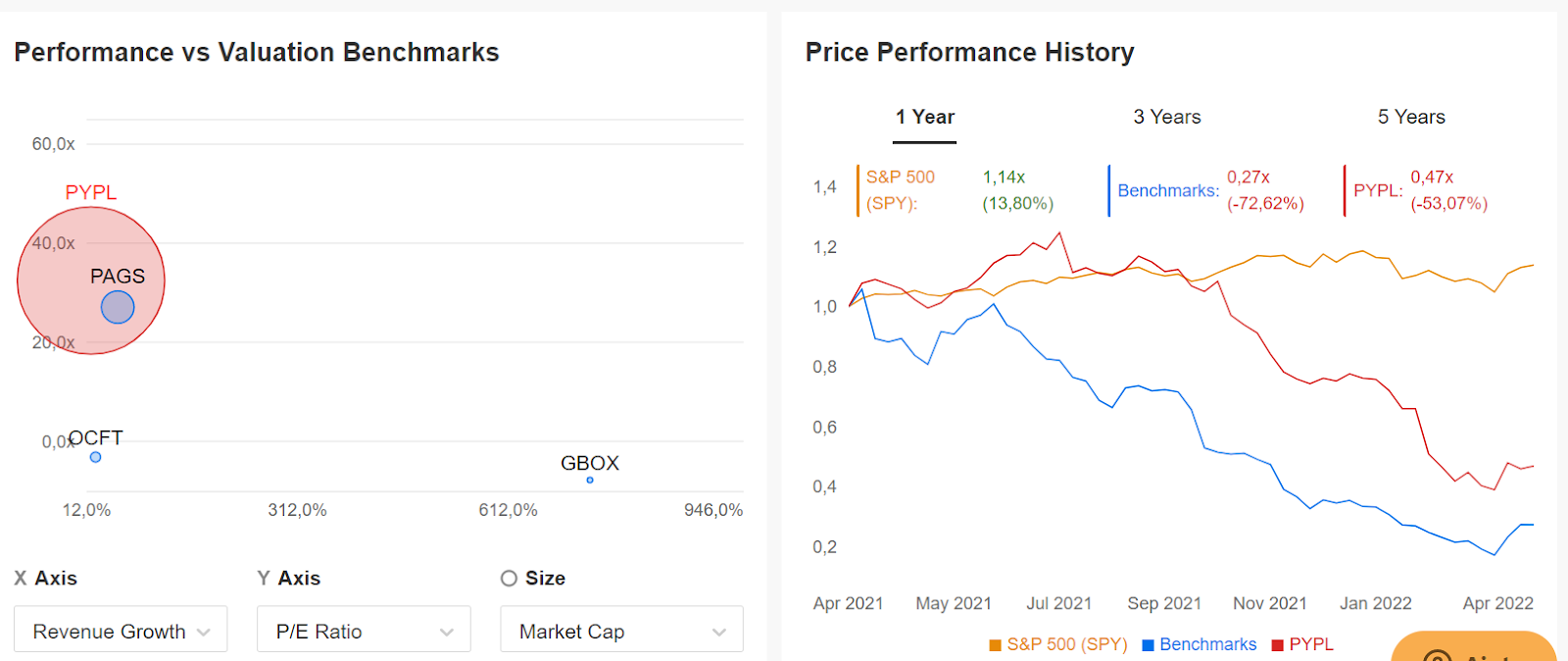
Very interesting also is the comparison with competitors. Here, we can see (left box, image above) how PayPal is the biggest stock by Market Cap (as represented by the bigger circle) but at the same time, it has a revenue growth in line with the other players and valuations in line with the sector (due to the recent crash).
In the box on the right instead, we see the performance of the stock compared to the market and other competitors. All these metrics are customizable, so I can add other companies to the comparison or change the data in the left pane (for example, using the ROA, return on asset, instead of revenue growth).
Diving into the Statements: A Legacy of Growth
If I then want to look at the history of financial statements and understand the possible target price of the stock, the most comprehensive service on the site, InvestingPro+, helps me to complete my analysis.
The first thing I can use is the historical data up to 10 years (income statement, balance sheet, cash flow statement) all in one place and easy to find, without having to search for, wasting a lot of time on the company website, and having to review all the financial statements year after year.
In addition, the export feature allows me to get files of various types (Excel in the example) to go to deepen my analysis if I want to perform further calculations on my own.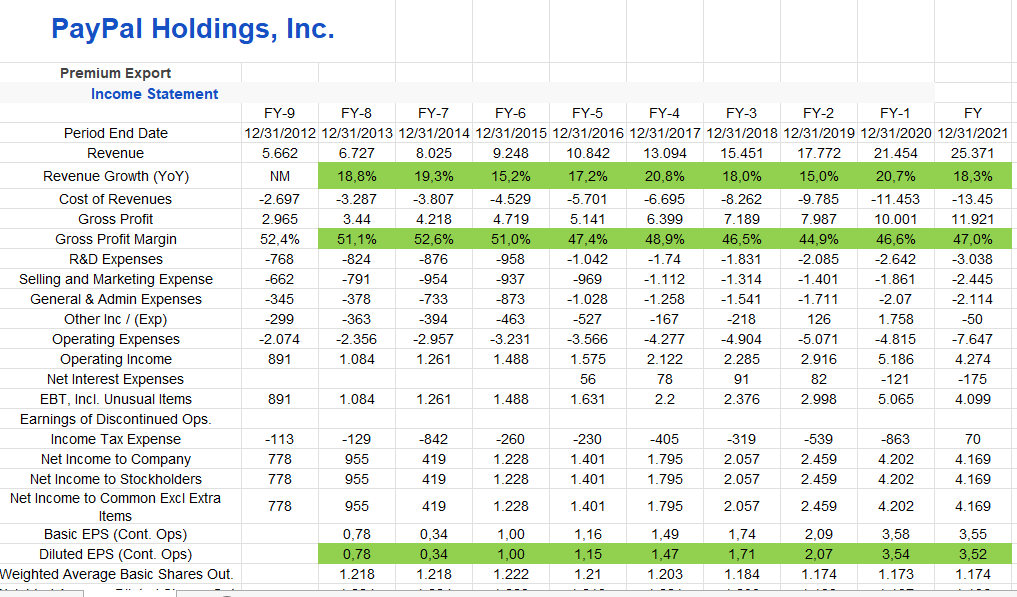
In the image above, we see that the lines shown in green already tell us an enduring story of growing profits and revenue over the years. We also see that PayPal's gross margins have historically remained constant and high, around 48%.
This sets us up for the final and summarizing section of our analysis, in which we have to estimate a possible price range and compare it with the current value of the security, to understand if we have a necessary margin of safety that will allow us to make our investment.
In the case of PayPal, we can see that the intrinsic value is 48.6% higher than the current value of the security. We can interpret this as the "margin" that we have on the correct value of the stock, or in other words, how much room for the stock to rise if things go well, and how much cushion for the stock if things do not go well. Usually, I consider optimal a value equal or higher than 25% in order to consider the margin potentially interesting.
Therefore, when I have to set a target price of the stock as the objective of my analysis, I place a level lower than the fair value obtained here and that also corresponds with the graphs from earlier. For example, $155/share.
Finally, I remember that the above fair value is the "average" of 12 different models, which take into account different aspects of valuations.
As we can see from the image above, we see that the "multiples" method expresses lower fair values than the discounted cash flow model. However, even here, knowing that the stock is trading at a significant discount, even in the case of a worst-case estimate, we would still be well ahead.
Conclusions
So, summarizing the main points of my analysis of PayPal:
-
Stock with discount valuation
-
Margin of safety of higher than 25% compared to Fair Value
-
Excellent balance sheet
-
Possible technical rebound after the strong fall and oversold
-
Growing earnings and revenue trend
We are in front of a possible "Buy" of a stock to be included in our portfolio.
If you find my analysis useful and want to receive updates when I publish them in real-time, click on the FOLLOW button on my profile!


